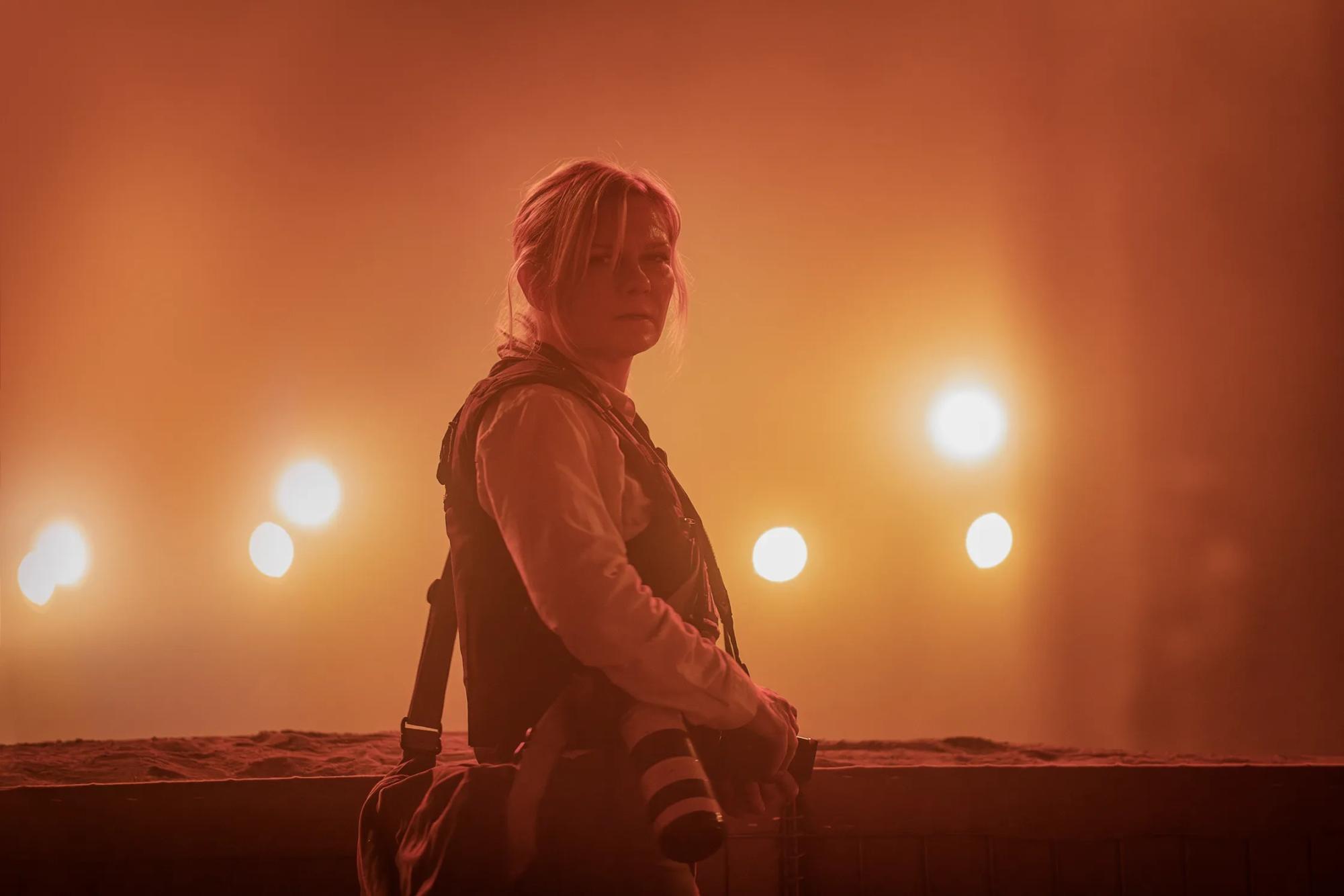With the rise in popularity of science fiction and dystopian media, many have become obsessed with considering what society could look like in different contexts. These thoughts have permeated our minds forever, but it’s particularly eerie when these fictional worlds begin to blend more and more with our present reality. Alex Garland’s newest film shows us an alternative United States of America, one that’s in battle against itself. But would that be all too different than our current reality?
The film opens with (one of the few) images of the fictional President of the United States (Nick Offerman), giving an address to the nation. His speech is intercut with footage of war, but it’s glimpses of a war we don’t see much of for the rest of the runtime. The trailer for “Civil War” promised to show a war-torn nation through the eyes of photojournalists traveling the country. Instead, it gave us a confused mess of characters trying to understand a situation that doesn’t make any sense.
We are introduced to Lee (Kirsten Dunst), a deeply scared and traumatized war photographer who has been on the front lines documenting the civil war. Dunst has a deep-seated sadness on her face that bleeds out exhaustion from the horrors of war, which is the only indication that a world-changing event has happened. What we are shown of this dystopian world doesn’t paint the scene of a civil war but of the outskirts of it. It’s almost as if Garland was too afraid to get into the nitty-gritty of the war. Instead, he always stays a comfortable distance away from it, giving us only glimpses of the horrors.
This distance is how Garland approaches not just the war, but the characters that occupy it. Lee brings along a team of journalists on her journey to Washington, D.C. that includes seasoned writer Sammy (Stephen McKinley Henderson), cocky interviewer Joel (Wagner Moura), and an aspiring photojournalist Jessie (Cailee Spaney). Not much is learned about these characters other than their goals within the film; Joel wants to interview the President before the Western forces (composed of a California and Texas alliance) take siege over D.C., and Jessie wants to be like Lee. This lack of depth is disappointing because the film tries to start a conversation about the ethics of photojournalism. In several scenes we are shown the horrors of war through Lee and Jessie’s lenses, but soon after, we are shown the aesthetics of war from those same lenses. They walk a thin line but don’t stop to think if they should continue what they are doing. “It’s extensional,” Sammy tells Lee after she expresses concern over whether what they’re doing is right, but nothing follows this line of sentiment beyond that scene.
The film is full of themes that don’t receive any follow-through, which makes connecting with the characters and caring about them so difficult. Unfortunately, the politics, characters, and motives don’t go below surface level, so none of them hold any weight. There are many scenes full of death and disparity that are overlaid with upbeat music that doesn’t fit the tone, leaving the audience feeling uneasy. These scenes left me confused, not understanding what message Garland was trying to convey. If Garland wants to start a conversation about photojournalism’s role in war, why doesn’t he offer any substance to do so? What Garland offers instead are stunning visuals that try to capture the scope of the war. No one can deny the film looks great, but aside from the last 30 minutes of the film, I can’t say the IMAX was utilized to its full potential. Scenes that put America’s self-destruction on full display are romanticized and, again, conflict with the tone the film set.
The role of photojournalism is questioned but never answered. Not that every question a film poses needs a concrete definitive answer at the end, but a semi-clear stance would’ve been nice. In the volatile political climate we are in right now, we cannot afford to be vague. We must make our stances clear. The film ultimately mirrors Lee; it wants to capture something grand and say something significant, but in the end, it is so far removed from what it’s showing that it has nothing substantial to say.
Image courtesy of Vanity Fair








